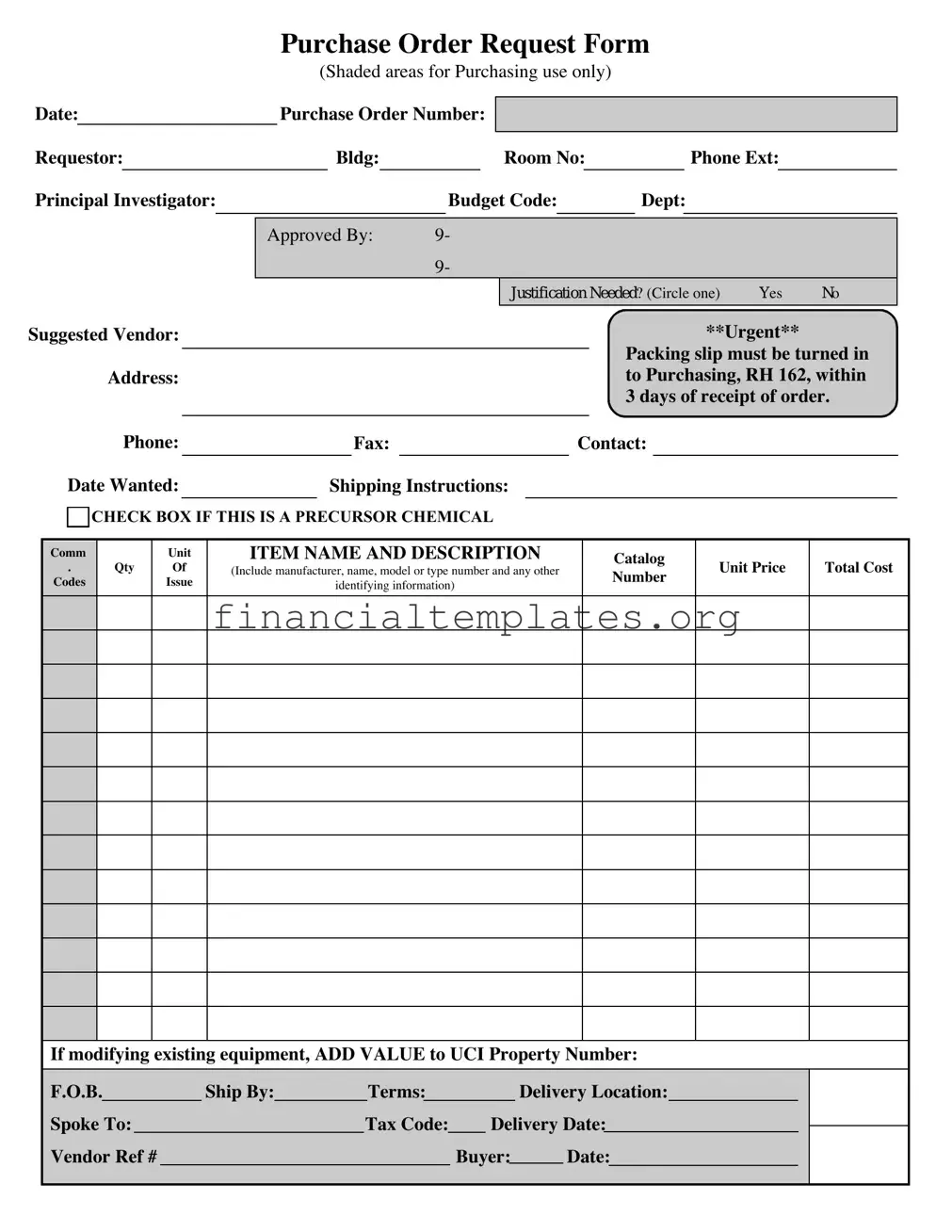The Purchase Order form shares similarities with the Sales Agreement, as both outline the terms and conditions of a sale between two parties. Specifically, they detail the items to be purchased, their quantities, and prices, providing a clear agreement to prevent misunderstandings. However, a Purchase Order is typically initiated by the buyer and sent to the seller, whereas a Sales Agreement can be initiated by either party as a more formal, binding contract that encompasses terms beyond the basic transaction details.
Similar to an Invoice, the Purchase Order form specifies the products or services being purchased, the agreed-upon prices, and the terms of payment. However, the key difference lies in their purpose and timing. The Purchase Order is created and sent by the buyer to the seller to initiate a purchase. In contrast, the Invoice is issued by the seller to the buyer to request payment after the goods or services have been delivered, marking it as a billing document rather than a purchasing document.
A Proforma Invoice is another document resembling a Purchase Order form in that it lists the goods or services to be sold, along with prices and other transaction details. It is usually sent by a seller to a buyer before delivery of the goods or services as an estimated bill. While it looks much like an actual invoice, its purpose is primarily informational, designed to give buyers a precise idea of the costs. In contrast, a Purchase Order represents a concrete commitment by the buyer to purchase the specified goods or services under agreed-upon terms.
The Quotation or Quote document also bears a resemblance to the Purchase Order form, as it outlines the proposed price for goods or services. Sellers use it to offer potential buyers a fixed price, usually binding for a certain period. Although both documents detail the products, services, and prices involved, a Quotation is an initial offer made by the seller, while a Purchase Order represents the buyer's acceptance of this offer and intention to purchase under those specified terms.
Lastly, the Supply Agreement parallels the Purchase Order in its function to specify the goods or services being exchanged, including prices. This agreement typically sets forth a longer-term relationship, detailing terms for the supply of products or services over a period of time, including quality standards, delivery schedules, and payment terms. Unlike a one-time Purchase Order, a Supply Agreement lays the foundation for an ongoing business relationship, possibly incorporating many future Purchase Orders under its terms.

